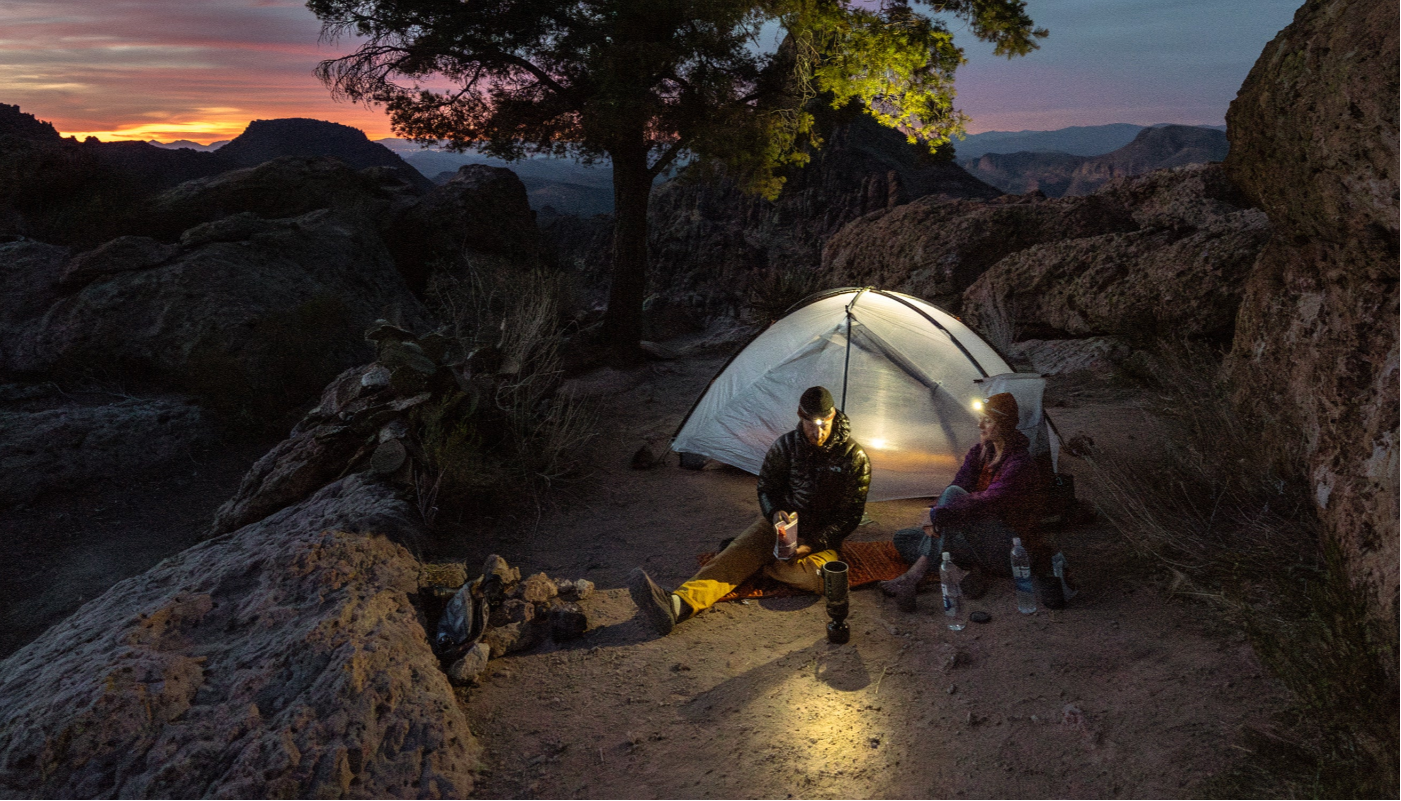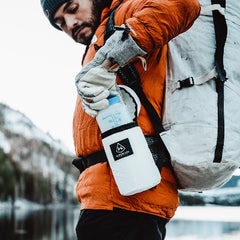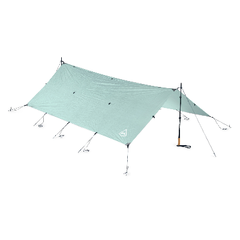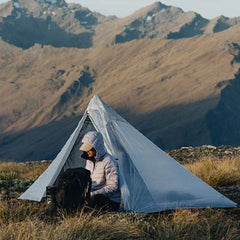Words & Photos by Evan Connolly
Somewhere near Fryeburg, Maine, the road changes from wide comfortable pavement to winding narrow dirt. I was getting closer. I rolled my windows down, turned my stereo up, and let the excitement that had been building along the way wash over me. The spring sun was shining high above the valley as snow clung to the higher summits. It was the middle of May in the White Mountains National Forest, and it felt like the woods were letting out a sigh of relief after a long winter. The feeling was mutual. I was more than ready to stretch my legs and get after my first serious trip of the season.
I pulled into the parking area on the eastern bank of the Wild River. After doing a quick gear check, I threw my three pre-packed Pods into my NorthRim pack along with my shelter and sleeping bag. The Moriah Brook Trail runs through the Wild River Wilderness Area, meaning the trail is kept primitive. There was a high probability I would be bushwhacking for a bit. The trail in question is more of a concept than a firm and exact pathway. Suffice to say I would be scraping and scratching between boulders, rocks, and brush. The perfect place to put my NorthRim pack to the test.
I looked over the trail map, double-checking the route. For a second, I thought about ditching. A heavily traveled trail on the other side of the range would get me where I was going, so why force my way through this way? No. I was ready for this. A new season, a new challenge, it was time to push myself.

I planned to head up the Moriah Brook trail through the Wild River Wilderness to the Carter Range, where I would spend my first night. Day 2, I would traverse the Carter Range and rendezvous with some friends headed in from the west. It was an ideal itinerary; some challenging hiking followed by some downtime with friends in one of my favorite places in the whole world: Carter Notch.
The Carter Range has become a very special place for me. Often overlooked by peak baggers that would rather be on the Presidential Range or deep in the Pemigewasset Wilderness, the Carters remain a quiet corner of the White Mountains. Although others seem to avoid it, my path through the great outdoors has continually led me to this corner of the National Forest.
I remember leading trips of less than enthusiastic campers up the Carter Dome trail and setting up camp just below Zeta Pass. I look back on that time and wonder how anyone saw me as fit to lead these trips. I was fully decked out in cotton, right down to my cargo shorts. Pack weight was certainly not something I was thinking about either. I would often get stuck with a six-person dome tent, cast iron pan, and however else the summer camp saw fit to outfit us.
After several years and many more outdoor experiences, including a few more traverses of the Carter Range, I returned to the Notch in August of 2018 to work on hut crew for the Appalachian Mountain Club. It was my second season working for the AMC in the huts department, doing what can only be described as the most absurd of outdoor jobs. I spent the fall baking bread, cooking dinners for 40, carrying around 75 pounds of supplies into the backcountry, and assisting thru hikers as they tried to recover from their climb over the notorious Wildcats.
By the time the fall season came to a close, Carter Notch felt like home. The boulders and rock slides were my backyard, and the glacial pools were the front. Leaving was tough, and I was more than excited to return to my old stomping grounds on this trip. One of my pals was filling in for the caretaker and bringing with him a couple of folks from the valley, as well as some cold brews and delicious food. I had a lot to look forward to at the hut, but first I had to get there.
After that second of parking area doubt passed I shouldered the pack and was immediately thankful I wasn’t traveling with a gaggle of teenagers, and a dome tent. The Wild River was living up to its name. What was an easy rock hopping water crossing during the middle of summer had become a wide and fast-flowing river surging with a winter’s worth of snowmelt. I took off the boots I had just finished tying and prepared to ford the river. Was this the right move? The doubts echoed in the back of my head.
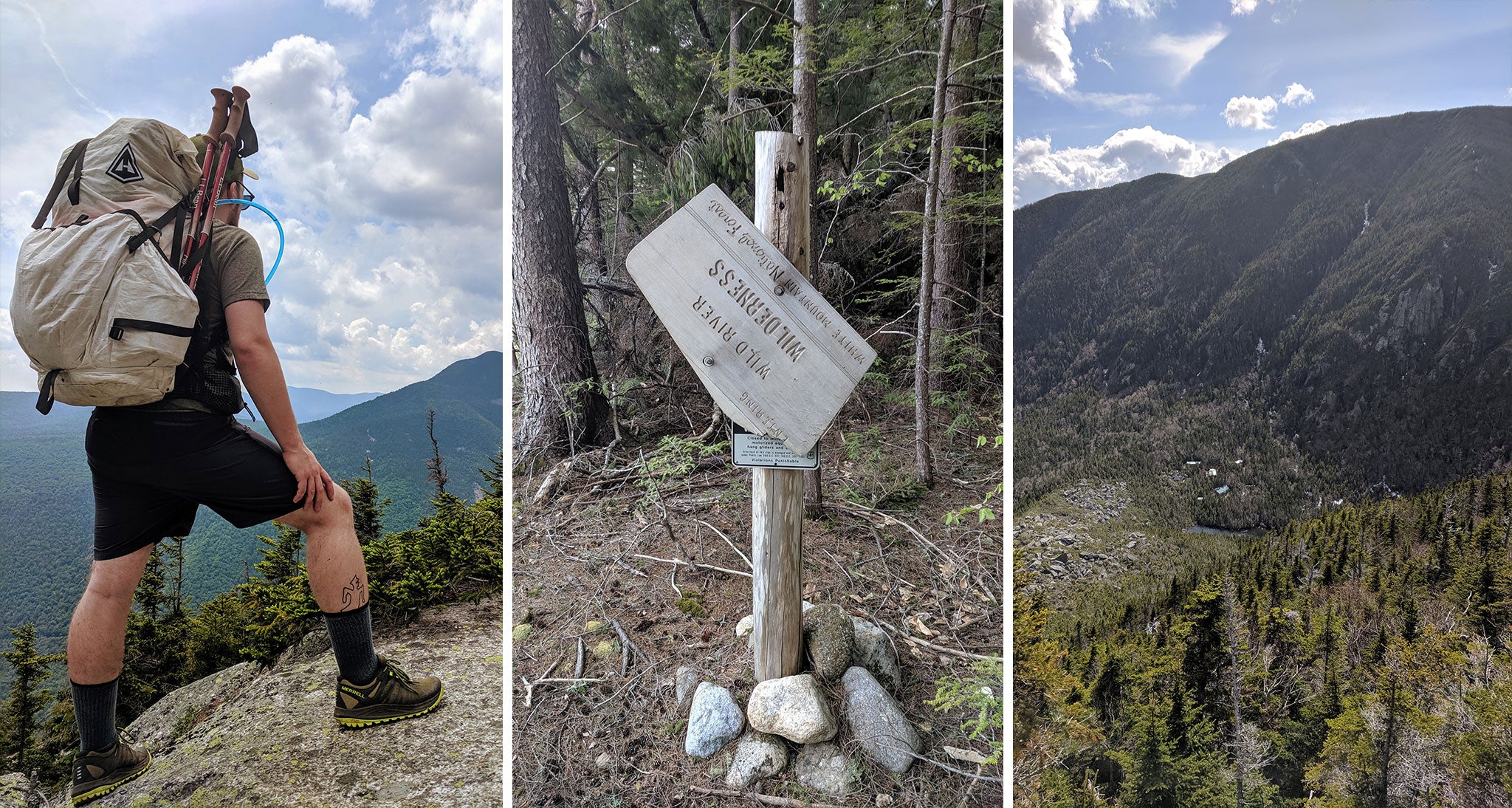
I knew that if my sleeping bag, shelter, or change of clothes got soaked, the trip was over before it could even start. The White Mountains are no place to be while not equipped, especially in May, when the weather and temperature can swing wildly. Then I remembered, duh, my NorthRim is built with 100% waterproof materials. Plus, to add some much needed peace of mind, all of my essential gear was stowed in pods within my pack, adding a second waterproof layer. With that in mind, I used my trekking pole as a wading staff and crossed over into the wilderness area.
I quickly realized this would be quite different than any other trip I had taken on the Carter Range. After a long winter, it was clear I was one of only a few to pass this way after the snow melted. Staying on track took a lot of focus, I often found myself at impasses, where I genuinely was unsure of the way forward and had to spend a minute or so eyeballing the possibilities. I familiarized myself with the map beforehand and had landmarks to keep me on track, which were coming in handy. Moving without a clear trail can be stressful, but this was also proving to be a reward. I moved through the dense forest as it occasionally opening into bogs and bubbling brooks. I saw beaver dams being built back up and moose scat. You could tell the critters were returning to their summer homes and habits, and I was too.
As the sun started to inch closer and closer to the top of the Carter Range and the shadows spread, I approached the final ascent to the ridge. Towards the crest of the range, there was a major patch of blowdowns that had wholly obscured the trail. Studying the path ahead and retracing a few steps, I caught myself grinning. Not grimacing, or stressing, or fearing for what would come next, but grinning because I was lucky enough to be outside and knew there was nothing to worry about.
I can’t say I would have handled this situation the same way a few years back. I certainly wouldn’t have taken on this section of trail, especially not alone. But at that moment, I felt the self-confidence that I seek in the outdoors. I knew that I could find my way out and onto the ridge, I knew I had a plan that would work, and I knew I had the gear that would keep up with me along the way.
After crunching across some icy snow and scraping through countless branches, I continued uphill. That’s when I saw the sign, “You are now leaving the Wild River Wilderness Area." I patted the sign, and stepped onto the Appalachian Trail, which looked like a freeway compared to the trails I had spent the day on. The next day I sailed across the Carter Moriah Trail, occasionally post-holing. It was a nostalgic experience. Familiar terrain. Spots where I had stopped to take in the view or assist a camper over the years. Eventually, I dropped down to the hut where I regrouped with my crew for a couple beers and a whole lot of good times.
I left with a new respect for the Carter Range. I had discovered that there was so much more to a place I thought I had known. So many more nooks and crannies and places to explore and experience just in this one corner of the White Mountains. I also left with a newfound sense of confidence in myself, and I now knew that I had what it takes to continue exploring and pushing myself farther and farther across the map. I can believe in my gear to support me, and I trust myself to find my way.
Evan Connolly is a Hyperlite Mountain Gear employee, writer, and former Appalachian Mountain Club Hut Croo member. When he isn't helping build packs, he is likely backpacking, skiing, or running in the White Mountain National Forest. You can find more about his experiences in and around the White Mountains on Finding 4000'. He can also be found on Instagram: @Finding4000.
